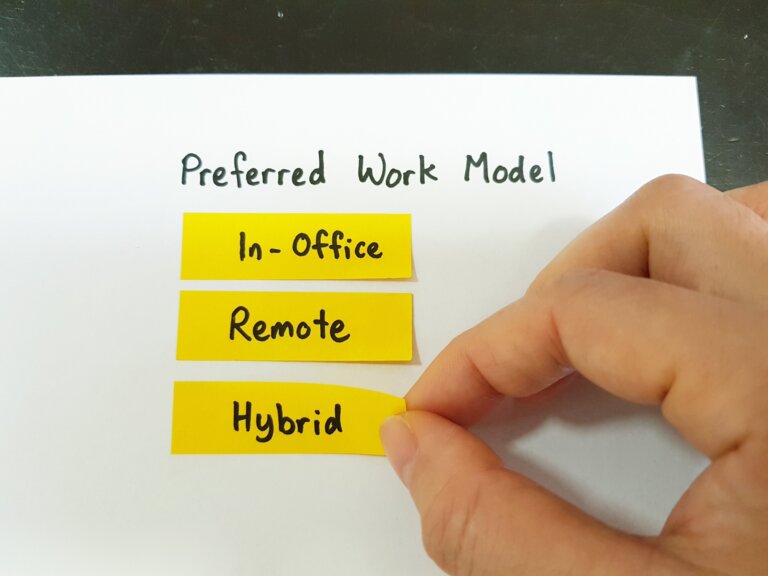The formal hybrid workplace model has existed since at least the early 1990s with ABN Amro Bank’s usage of online intranets. This was to the benefit of important members of the staff who were unable to commute daily to the office such as work-at-home mothers. Nearly 30 years ago, firms were already crafting systems to maintain communications and to measure performance over sizable distances. So it isn’t that surprising that when hybrid workplaces went from valid option to nigh-necessity for many businesses during the recent pandemic, a multitude of firms was able to implement them with deft, if not effortless, swiftness.
Established and effective as it is, however, hybrid workplaces present their own challenges to the businesses that try to adapt them. The traditional office provided a common ground for workers to ply their trades, socialize with one another, and foster a shared sense of purpose and accomplishment with the goals they set and achieved. Having some workers there physically and others digitally on certain days fundamentally alters the way employees interact and collaborate with each other. Staff engagement and even staff retention may be at risk depending on how the office adapts. There’s also the possibility that while certain employees would be thrilled to work from home rather than commute, others would be less than enthused with the idea due to having distracting living spaces or poor online access.
Following the COVID-19 pandemic lockdown, after more than a year of working from home, JCCI began to implement a hybrid set-up for employees towards the latter part of 2021. This helped us maintain our culture and allow better collaboration. Consequently, this has led us to identify four chief areas crucial to a healthy hybrid workplace model. These can maintain staff engagement and could very well improve it across various departments.
Compatible and Functional Office and Home Set-Ups
Determining whether an employee’s workstation in the office and the one they’ll need at home can work in tandem is the initial, and perhaps, most vital step. The hybrid workplace would be an impossibility for anyone who doesn’t have the necessary equipment to perform their tasks or the online connectivity required to receive and convey information in a timely manner.
Some firms outright provide portable equipment such as company-owned laptops to avoid confusion and formatting errors, but it’s possible to attain a similar level of fidelity by just allowing employees to bring their tools home with them, provided the office can keep track of the items. Allocating funds from typical office expenses to an internet plan allowance would likewise resolve inaccessibility issues to a firm’s digital platforms.
Focused Communication and Coordination
Traditionally, teams could simply hold meetings or approach one another at work to quickly deliver information or outline action plans. With digital notifications becoming more commonplace, a hybrid workplace is capable of simulating this ease of communication, provided that a common digital platform is defined and made available for employees. Having a multitude of ways to communicate with clients such as email, Facebook, Twitter, and the like is laudable, but it’s recommended that you have only two-to-three reliable and consistent ways your own workforce can talk with each other.
An employee dividing their attention among Viber, Facebook Messenger, and potentially more out of fear of missing out on important messages from their coworkers or team leads doesn’t foster staff engagement so much as it does staff exhaustion. It’s better to give employees access to a focused set of apps that they can reliably refer to for updates and messaging. Depending on your office’s budget and the specifications of the devices available to employees, you can choose to use apps like Slack, RocketChat, Microsoft Teams, or Flock to be the default means of communicating from team to team, and team member to team member, to ensure that your hybrid workplace runs smoothly.
Clarity and Consistency
A sense of fulfillment from a completed aim or successful campaign does wonders for staff engagement. To maintain such forward momentum, it’s good practice to keep employees appraised of what they need to be doing and the timeframe they have to reach their next big milestone. Task manager software might seem like a luxury, but for a hybrid workspace where team members may be miles away from each other depending on the day, it can become an indispensable asset.
Duties and deadlines can be properly framed with apps such as Asana or Workzone. Although, if that’s outside the office’s ability to afford, then a strong roadmap in the form of a power point presentation, spreadsheet, or pdf could make for a sufficient substitute. Make sure to keep the conversation open with employees so they’re not assigned too much or too little based on their capabilities.
Flexibility
The last area that must be addressed to keep staff engagement stable and growing is one that can’t truly be crossed off no matter how well the hybrid workplace functions. Remaining flexible will always be at a premium as a firm must be ready and open to change, to discard, and to adapt depending on the needs of the situation. Office set-ups were very different just two years prior, and necessity may force them to restructure more than once as the decade proceeds.
Recommendation in this very article, while relevant today, may be altered or even replaced by forthcoming innovations. Which is something to look forward to as there are worse burdens to bear than an abundance of solutions. Maybe you’ll come up with a few of your own.
Please visit our official website, to learn more about our company and the services we provide.





